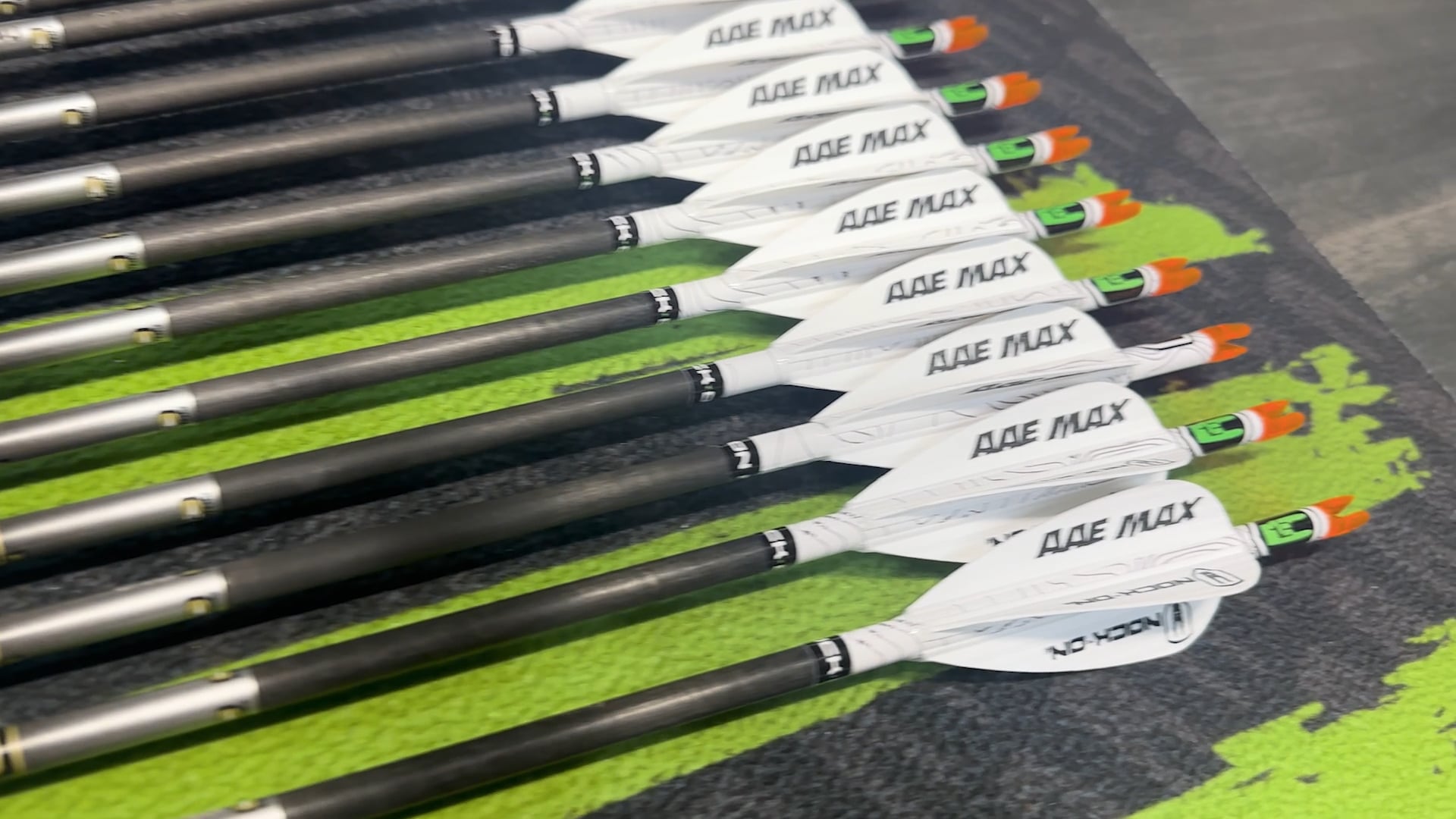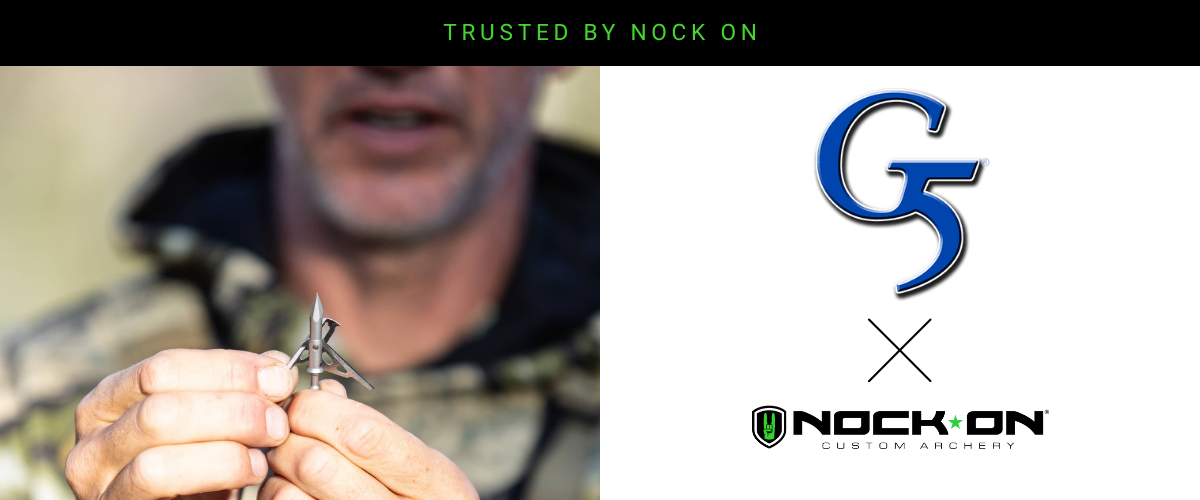As bowhunters, we obsess over our arrow setups. I’m no exception.
If you’ve been following my hunts, you might have noticed something odd about my arrow selection lately. Let me pull back the curtain on what I’ve been shooting and why certain arrows excel in specific hunting scenarios.
The Arrow Test You Didn’t Know About
Those black and green Axis arrows you saw me shooting in Alberta last season weren’t Axis arrows at all.
If you looked closely, you would have noticed the small black line or circle I drew on those shafts. That was my subtle way of tracking my prototype Easton 5.0 arrows while testing them in real hunting conditions.
(We have to run R&D and prototyping. A lot of times, I give you guys Easter eggs. This wasn’t an easy one to catch.)
I was field testing the new five-millimeter 5.0 arrows disguised as my trusty Axis shafts. This behind-the-scenes testing process is important for product development, and I’ve been putting these arrows through their paces for over a year now, long before they were officially released.
Why I’m Starting This Season With the 5.0 Arrow
For my early season hunts in Alberta and a Utah hunt I scored with a leftover tag, I’ll reach for the 5.0 arrows.
There are tactical reasons for this choice:
- Wind Management: Both Alberta and Utah hunts often mean dealing with serious wind in the open areas. A faster, flatter-shooting arrow helps minimize wind drift when those gusts kick up.
- Challenging Terrain: Alberta’s canola fields are uniquely challenging. When hunting in thick cover like this, perfectly estimating range can be difficult, especially when you’re on your back glassing up at animals. A faster arrow is more forgiving when your range estimate is off by a few yards.
- Target Species Considerations: For muleys and elk in these early-season situations, I don’t need the maximum arrow weight I might want for larger game. The 5.0’s balance of speed and penetration is perfect for these conditions.
The 5.0 Platform’s Technical Advantage
The 5.0 arrow’s beauty is its versatility, achieved through component selection. Because the shaft itself is lighter than an Axis, I can add weight strategically where I want it, primarily up front, without creating a heavy arrow overall.
In the past, when you wanted a faster arrow for these conditions it usually came at the cost of lighter inserts or lower than desired F.O.C. (Front of center) or restricting fletching choices or even the use of a lighted nock. With the 5.0 you can have all the components you want without too much overall weight.
My specific 5.0 setup includes:
- 75 grains of brass in the insert (instead of the standard 50)
- 100-grain broadheads
- Custom wraps
- 4-fletch configuration with 2.25–2.5 degree offset in a right helical
- Nockturnal lighted nocks
This configuration gives me better FOC (Front of Center) weight distribution for improved accuracy and penetration while still maintaining the speed advantage I want for these hunting situations. The added weight up front improves penetration, but the overall arrow weight remains manageable because of the lighter 5.0 shaft.
If you’re worrying about the weight of adding a lighted nock, or you want to try a heavier broadhead for a different type of large game, having that lighter arrow is important. You can go to a stiffer spine to put weight in the front, but even that doesn’t add overall arrow weight.
Don’t Overlook the Budget-Friendly Option
While I’m using the premium 5.0 arrows this season, don’t overlook the Sonic KE if you’re on a budget. These pre-fletched arrows perform beautifully, making them an extremely high-quality selection for their price.
The 5.0 offers tighter tolerances and better overall performance, but the Sonic KE has been battle-tested and proven effective for years. You don’t need the most expensive arrow to be successful. Don’t fall into that trap.
The Late Season Switch-Up
I’m committed to the 5.0 for early-season hunts, but I might try a new FMJ later on in the season once I climb up in the treestand and distances get closer and there’s less worry about wind and ranging.
This speaks to the situational approach I take with my gear. For whitetail hunting from elevated positions, where maximum penetration becomes more important because of steeper shot angles and heavier clothes on late-season deer, the FMJ’s added weight and penetration characteristics could be beneficial.
Final Thoughts on Arrow Selection
Whether it’s Alberta’s wind, canola fields’ thick cover, or treestand hunting’s unique angles, each scenario poses a different challenge that thoughtful arrow selection can address.
The 5.0 arrows give me the speed I need for early-season Western hunts while still allowing me to customize the weight distribution for optimal performance. My testing process (disguising these arrows as my familiar Axis shafts last season) gave me complete confidence in how they’ll perform when it matters most. The Axis is a battle-tested arrow and one I’ve loved for two decades. These new 5.0 just give you more options for your configurations while staying lighter than the O.G. AXIS.
To bowhunt successfully, you don’t need the latest and greatest gear. Rather, you need to understand why certain equipment choices matter in specific hunting situations.
That’s the knowledge that actually improves in-field success rates.






 massmonopoly
massmonopoly